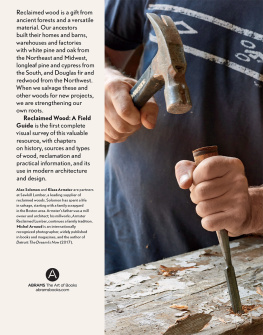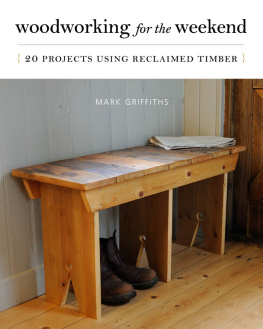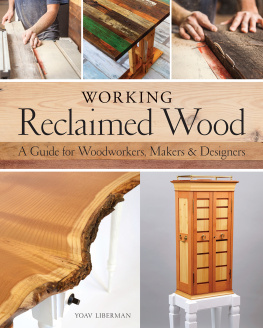Klaas Armster - Reclaimed Wood
Here you can read online Klaas Armster - Reclaimed Wood full text of the book (entire story) in english for free. Download pdf and epub, get meaning, cover and reviews about this ebook. year: 2019, publisher: Abrams, genre: Romance novel. Description of the work, (preface) as well as reviews are available. Best literature library LitArk.com created for fans of good reading and offers a wide selection of genres:
Romance novel
Science fiction
Adventure
Detective
Science
History
Home and family
Prose
Art
Politics
Computer
Non-fiction
Religion
Business
Children
Humor
Choose a favorite category and find really read worthwhile books. Enjoy immersion in the world of imagination, feel the emotions of the characters or learn something new for yourself, make an fascinating discovery.
- Book:Reclaimed Wood
- Author:
- Publisher:Abrams
- Genre:
- Year:2019
- Rating:5 / 5
- Favourites:Add to favourites
- Your mark:
- 100
- 1
- 2
- 3
- 4
- 5
Reclaimed Wood: summary, description and annotation
We offer to read an annotation, description, summary or preface (depends on what the author of the book "Reclaimed Wood" wrote himself). If you haven't found the necessary information about the book — write in the comments, we will try to find it.
Reclaimed Wood — read online for free the complete book (whole text) full work
Below is the text of the book, divided by pages. System saving the place of the last page read, allows you to conveniently read the book "Reclaimed Wood" online for free, without having to search again every time where you left off. Put a bookmark, and you can go to the page where you finished reading at any time.
Font size:
Interval:
Bookmark:
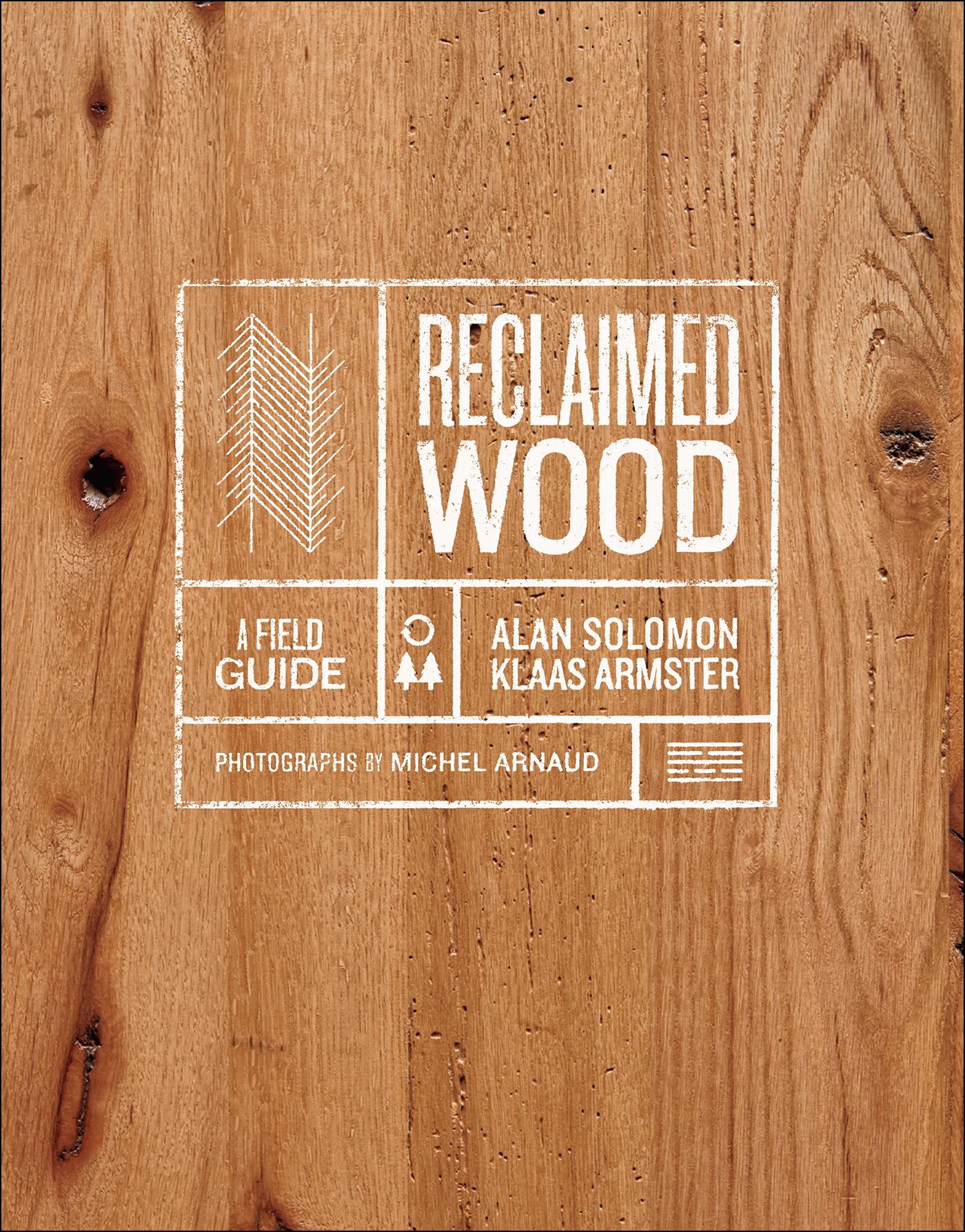
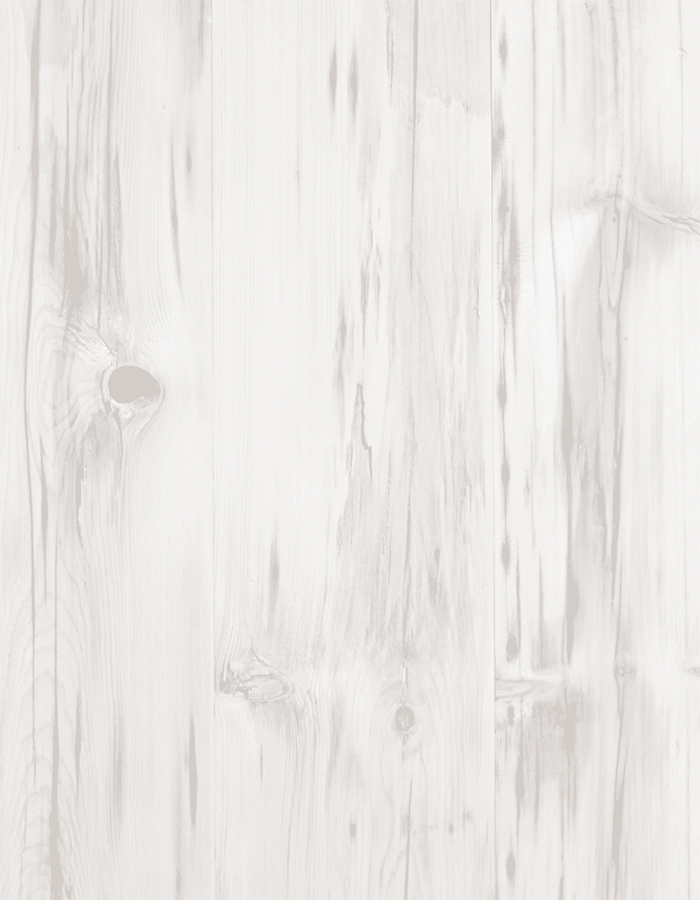


Crosscut saw with barn threshing floor.

White pine in the Adirondacks. Photograph by Paul Schaefer, c. 1945.


Longleaf pine at demolition site, 351 Broadway, New York.

Reclaimed woods at Sawkill Lumber Co., Brooklyn.
Chapter 1
Reclaimed Wood
Chapter 2
A Short History of Wood in America
Chapter 3
Sources of Reclaimed Wood
Chapter 4
Reclamation
Chapter 5
Designing with Reclaimed Wood
Chapter 6
A Trees Story

Eastern white pine stair treads in a loft in Brooklyn ().
The first American field guide, How to Know the Wild Flowers, by Mrs. William Starr Dana, appeared in 1893. Its publication came at the height of logging across North Americas virgin forests. The guide was meant to foster an intimacy with natures small, extraordinary, and often overlooked wildflowers, found as close as Fifth Avenue... in an earth-filled chink of pavement.
Reclaimed Wood is, in some respects, also a field guide. Our survey, however, catalogs a now almost absent feature of the natural world. Today, the virgin forest can be known in America not in the wild but in the exquisite grain and figure, the aged surfaces and human markings, of reclaimed structural lumber. In these pages, we look back, to reveal the history and nature of those timbers, and also forwardto their new use in modern settings and the forests that remain.
The book is a collaborative effort, though we start from different perspectives: as the son of a mill owner and architect, Klaas discovered the beauty and rarity of old woods, and how modern design is brought to life with them. Alan spent a life in salvage and became acquainted with reclaimed woods through his work in historic preservation, and then researched their origins in ancient forests, nineteenth-century logging camps, and old buildings of all kinds.
Our review is broad, and structured around five sources of reclaimed woodold houses and apartment buildings, barns, industrial buildings, wooden tanks, and what we call curious and uncommon structuresbut it is an enormous subject that eludes attempts at comprehensiveness. What we do offer is what we know, from a long, deep relation with reclaimed wood, based on our experience in the eastern United States.
Alan Solomon and Klaas Armster
Nothing is lost, everything is transformed.
Antoine-Laurent Lavoisier

Wall installation at City Point, Brooklyn (). Gray barn siding, southeast Asian cargo woods, Coney Island boardwalk, cypress vinegar-tank wood.
RECLAIMED WOOD

Old-growth timber has tight growth rings. Longleaf pine sourced at 104 South Street, New York City (built c. 1823). The tree may live to five hundred years.
For the purposes of this book, reclaimed wood refers to timber predominantly cut from old-growth forests, originally used to build structures in the nineteenth and the early twentieth century and subsequently recovered as lumber to be reused.
For us, the term evokes both a sense of lossthe ancient forests are now largely goneand a sense of preservation and renewal. The forests reemerge through the demolition process, bearing the marks and color of age and wear, and with a story to tell.
To help guide us, we can distinguish reclaimed wood in several ways: by the age of the wood and its sylvan origins, by the species of tree it came from, and by the type of structure the wood was originally used for. These three elements not only help account for the specific visual qualities of each woodcolor, grain, texture, and markingsthey also provide meaning in the form of history and sustainability. Together, these elements constitute the allure of reclaimed woods.
First turning our attention to age, we use these broad categories:
Old growth or virgin refers to wood that was cut from a mature, naturally established forest, seemingly untouched by human intervention. The lumber from these forests has highly valued qualitiesit can be massive, incredibly dense, richly hued, and often all heartwood, free of the lighter outer sapwood that moves water and minerals. These forests, composed of trees that were often hundreds of years old, were plundered, from the late eighteenth century to the mid-twentieth century, to build much of the United States. As a great deal of these old-growth forests have been cut, and nearly all are, thankfully, now off-limits to logging, reclaiming these woods from buildings is the only way not only to access the timbers unique physical characteristics, but also to preserve an essential element of the American landscape. With so many older structures having incorporated what is also now termed antique wood, old-growth timber makes up a large volume of reclaimed lumber stock.
Second growth refers to the trees that grew after the old-growth forest had been heavily cut. These trees, too, were used throughout the nineteenth and twentieth centuries, but tended to be younger at the time of logging than old-growth trees, often fifty to more than one hundred years old. Their different growing conditions and less mature ages are inscribed in the figures and grains of the woodsgrowth rings are broader and less numerous, colors are more muted. Distinguishing old growth from second growth is not always easy, and we sometimes turn from nature to human history for the answersthe nail type, surface patina, saw mark pattern, and age of the structure can help us date the original wood. Second-growth wood, also referred to as vintage, is a valuable source of reclaimed material. It tells a story of natural renewal after the intense logging of an earlier era.

Logging eastern white pine in northern Wisconsin. Detroit Photographic Company, c. 1890s.
Font size:
Interval:
Bookmark:
Similar books «Reclaimed Wood»
Look at similar books to Reclaimed Wood. We have selected literature similar in name and meaning in the hope of providing readers with more options to find new, interesting, not yet read works.
Discussion, reviews of the book Reclaimed Wood and just readers' own opinions. Leave your comments, write what you think about the work, its meaning or the main characters. Specify what exactly you liked and what you didn't like, and why you think so.

